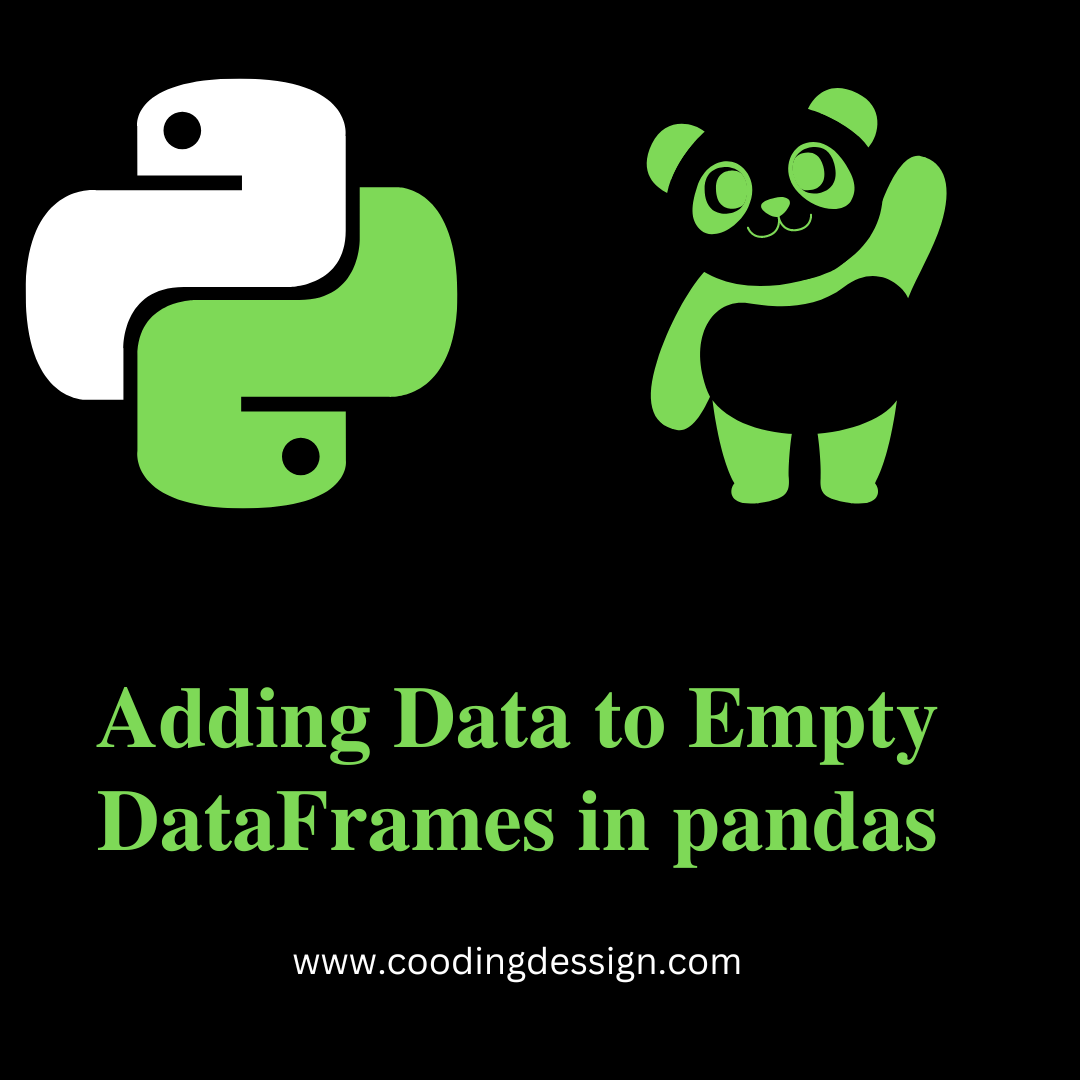One of the most famous outsider Python packages is called pandas. The pandas packages "is a quick, strong, adaptable and simple to utilize open source information examination and control instrument, based on top of the Python programming language." It is used by data scientists and software engineers around the world.
In this instructional exercise, you will find out somewhat about making various types of void or somewhat void DataFrames with pandas. Then you will become familiar with several unique ways of adding information to that DataFrame.
Specifically, you will learn about the following:
- Creating an empty DataFrame and adding data
- Creating an empty DataFrame with columns and adding data
- Creating an empty DataFrame with columns and indices and adding data
Creating an Empty DataFrame in pandas
In some cases you simply have to make a empty DataFrame, similar as you now and again need to make a vacant Python reference or list.
Here is an instance of making a totally empty DataFrame with pandas:

Of course, an empty DataFrame isn't especially useful. So let's add a little data to the DataFrame!

This model shows the way that you can determine sections in pandas and add information to those segments.
Presently we should figure out how to make a empty DataFrame that incorporates sections, yet no data!
Creating an Empty DataFrame with Columns
This next model will tell you the best way to make a pandas DataFrame that includes columns, however no lists or column data
Let's take a look:

Indeed, that was superior to a totally empty DataFrame! In this model, you likewise figure out how to utilize the DataFrame's append() method to add data to every column.
At the point when you use append() it takes in a dictionary of column name and value. You additionally set ignore_index to true, which allows pandas to update the index for you automatically.
Presently we should take a gander at how to make another kind of empty DataFrame with pandas!
Creating an Empty DataFrame with Columns and Indices
For this example, you will learn how to create a pandas DataFrame that has two columns and three named rows or indices.
Here's how it is done:

When you print out the DataFrame, you can see that the columns all contain NaN, which means "Not a Number". A NaN is similar to a None in Python.
One method for adding data to this DataFrame in pandas is to utilize the loc attribute
:
At the point when you use the loc attribute, you use dictionary like syntax to set a particular index to a list of values. The above model tells the best way to add three lines of data.
Wrapping Up
This tutorial doesn't actually start to start to surface how you can manage pandas. However, it shouldn't. That is the very thing books are for. Here you figured out how to make three unique sorts of empty DataFrames.
Hopefully, you will find these examples useful in your pandas journey. Happy coding!

